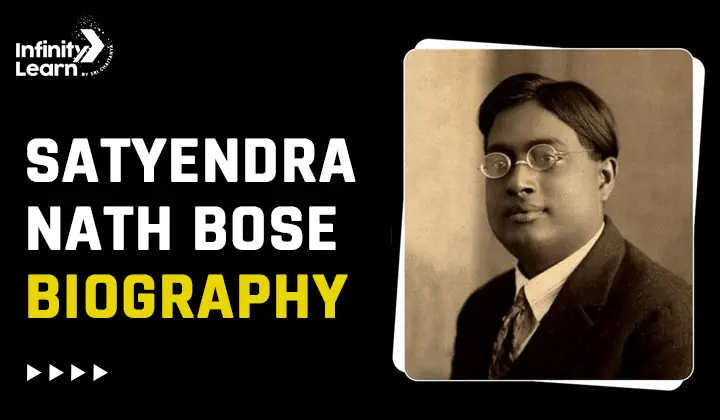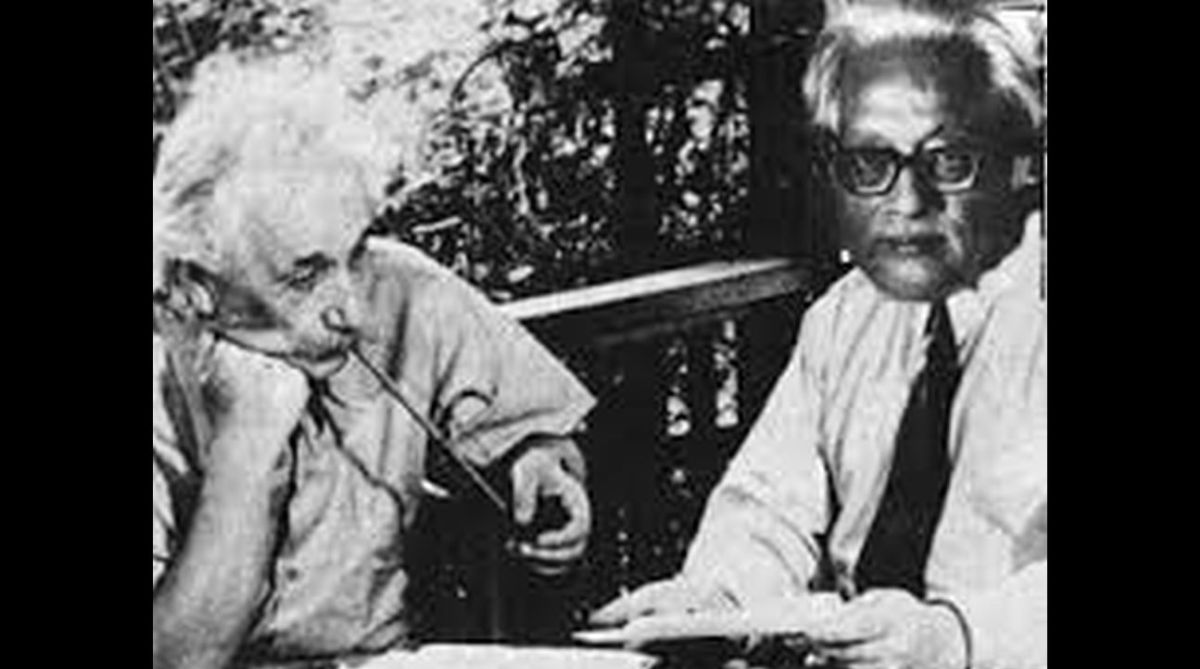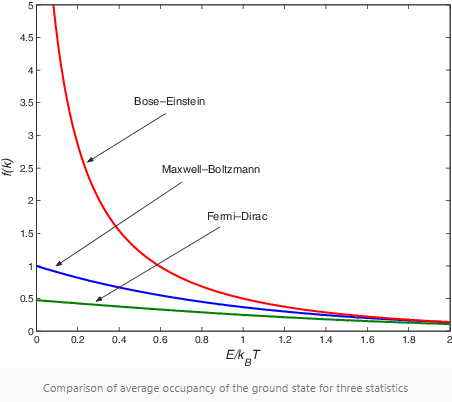Table of Contents
About Satyendra Nath Bose
Satyendra Nath Bose, born in 1894 in Calcutta, India, was a famous mathematician and physicist. He worked with Albert Einstein on a theory about how light acts like a gas. Satyendra Nath Bose passed away in 1974 in Calcutta.Bose was a brilliant student in high school and college, always ranking first in his exams. He got his M.Sc. in mixed mathematics in 1915 from Presidency College in Calcutta. He taught at the University of Dacca from 1921 to 1945 and then in Calcutta from 1945 to 1956.

During his life, Bose made important contributions to science. He wrote many scientific papers from 1918 to 1956, covering topics like statistical mechanics, X-ray crystallography, and field theory. Satyendra Nath Bose work “Planck’s Law and the Hypothesis of Light Quanta” in 1924 impressed Einstein, leading to their successful collaboration. At Satyendra Nath Bose age, scientific brilliance illuminated his path, shaping the future of physics with his profound contributions.
Satyendra Nath Bose Biography: Early Life & Education
Satyendra Nath Bose, a renowned physicist and mathematician from Kolkata, India, is famous for his work on the Bose-Einstein condensate and for inspiring the boson particle.
- Born on January 1, 1894, in Kolkata, he was the eldest of seven children. His father, Surendranath Bose, worked for the East Indian Railway Company.
- Bose excelled in school and college, ranking fifth in his matriculation exam in 1909. He graduated top of his class from Presidency College in 1913 with a Bachelor of Science in mathematics.
- He continued his studies at Science College, winning the MSc combined mathematics test in 1915, setting a record at the University of Calcutta.
- Bose began researching the theory of relativity in 1916 and later joined the physics department at the University of Calcutta as a lecturer.
- In 1921, he became a Reader at the University of Dhaka’s Department of Physics.
- His groundbreaking work came in 1924 when he derived Planck’s quantum radiation law, a significant achievement in his career.
- Bose’s paper was sent to Albert Einstein, who recognized its importance and helped publish it in a German journal.
- This collaboration led to the prediction of the Bose-Einstein Condensate phenomenon and the discovery of bosons like the Higgs boson.
- Bose’s contributions are considered among the greatest in 20th-century physics, earning him recognition as a Fellow of the Royal Society and the Padma Vibhushan in 1954.
- Apart from physics, Bose also researched literature, biotechnology, chemistry, geology, zoology, anthropology, and engineering.
- Satyendra Nath Bose passed away on February 4, 1974, and the S.N. Bose National Centre for the Basic Sciences in Salt Lake City honors his legacy.
Satyendra Nath Bose Images
When searching for Satyendra Nath Bose images or Satyendra Nath Bose photos online, one can find a variety of visual resources that depict this renowned physicist and mathematician. The Satyendra Nath Bose images often showcase portraits from various stages of his career, highlighting his contributions to science and his collaboration with Albert Einstein.
Additionally, Satyendra Nath Bose photos can include historical photographs that capture significant moments or events in his life. These images not only serve as an educational tool but also help to personalize and celebrate his legacy in the field of physics. Whether for academic purposes or personal interest, exploring Satyendra Nath Bose images and Satyendra Nath Bose photos provides a visual connection to this iconic figure in science.

Satyendra Nath Bose Inventions
Satyendra Nath Bose Inventions is famous for his work on quantum mechanics in the early 1920s, where he laid the groundwork for Bose statistics and the Bose condensate theory.
Bose-Einstein Statistics
In 1924, Bose proposed a theory that showed how identical particles could be distributed in a unique way. Later, Albert Einstein collaborated with Bose to further develop this idea.According to Bose-Einstein statistics, a group of identical particles that do not interact with each other can occupy specific energy states in two different ways when in equilibrium.
This statistical concept explains phenomena like the behavior of laser light and superfluid helium.Particles that follow Bose-Einstein statistics, known as bosons, can occupy the same state without any restrictions imposed by the Pauli exclusion principle. Bosons have integer spin values, distinguishing them from other particles. The term “boson” was coined by Paul Dirac to honor Satyendra Nath Bose’s significant contribution to this field.

Satyendra Nath Bose Contribution to Physics
Satyendra Nath Bose, an intelligent Indian mathematician and physicist, made important contributions to quantum mechanics. His key achievements include:
- Light Quantum Hypothesis: In 1924, while teaching at Dacca University, Bose wrote a paper to explain Planck’s Law, which talks about how light behaves like a gas. He introduced the idea of light quanta or photons, showing that light is released in specific amounts, not continuously.
- Bose-Einstein Statistics: Bose, along with Albert Einstein, developed the Bose-Einstein statistics, which is crucial in quantum physics. This concept deals with how particles with integer spin behave, now called bosons in his honor.
- Recognitions and Honors: Satyendra Nath Bose received prestigious awards during his life. In 1954, he was given the title Padma Vibhushan by the Indian Government. In 1958, he became a Fellow of the Royal Society. He was also appointed as the National Professor, the highest academic honor in India, holding the position for 15 years.
- Legacy: Bose’s work is remembered through the naming of bosons after him. Bosons are a type of elementary subatomic particles with integer spin, one of the two main classes of subatomic particles. His research on bosons, Bose-Einstein statistics, and Bose-Einstein condensate remains a significant field in particle physics.
- Google Doodle Tribute: On June 4, 2022, Google paid tribute to Satyendra Nath Bose with a Google Doodle, marking the 98th anniversary of his groundbreaking quantum ideas shared with Albert Einstein. Einstein recognized his work as a key discovery in quantum mechanics.
Satyendra Nath Bose Achievements
Satyendra Nath Bose was a brilliant Indian physicist whose work had a profound impact on theoretical physics. Here are some of his key achievements:
- Advisor to Council of Scientific and Industrial Research: After the Council of Scientific and Industrial Research was formed, Bose was chosen as an advisor due to his deep knowledge and expertise in science.
- Leadership Roles: Bose was selected to lead important scientific organizations in India, such as the Indian Physical Society, the Indian Statistical Institute, and the National Institute of Science. His leadership helped boost scientific research and education in the country.
- General President of Indian Science Congress: Bose was appointed as the General President of the Indian Science Congress, demonstrating his influential position in the scientific community and his commitment to advancing scientific knowledge in India.
- Rajya Sabha Nomination: Bose received a nomination to the Rajya Sabha, the upper house of the Indian Parliament, highlighting the recognition and respect he had in both the political and scientific spheres.
- Royal Society Fellow: In 1958, Satyendra Nath Bose was honored with the prestigious designation of Fellow of the Royal Society, one of the top scientific honors in the world, reflecting his significant contributions to science.
- Padma Vibhushan Award: In 1954, Bose received the Padma Vibhushan, one of India’s highest civilian awards, for his exceptional contributions to science and theoretical physics.
- Nobel Prize Nomination: Although Satyendra Nath Bose was nominated for the Nobel Prize, he did not receive it. However, his groundbreaking work on quantum mechanics and Bose-Einstein statistics is still considered one of the greatest achievements of the 20th century in physics.
Satyendra Nath Bose Biography: Legacy
Satyendra Nath Bose is remembered in science for his important work in quantum mechanics and statistical mechanics. Some key parts of his legacy include:
- Naming of Bosons: Bosons are named after Satyendra Nath Bose to honor his contributions to science. These particles have integer spin and follow Bose-Einstein statistics, playing a crucial role in particle physics.
- Google Doodle Tribute: Google honored Satyendra Nath Bose on June 4, 2022, by featuring him on a Google Doodle. This tribute marked the 98th anniversary of Bose sending his important quantum ideas to Albert Einstein, recognizing the impact of his discoveries in quantum mechanics.
- Lasting Contributions: Even though he didn’t win a Nobel Prize, Satyendra Nath Bose is remembered in science through the concept of bosons and Bose-Einstein statistics. Physicists worldwide still study and admire his work.
- Impact on Physics: Satyendra Nath Bose’s work in theoretical physics and his dedication to learning have made him a respected figure in the history of science. His legacy lives on through his groundbreaking research and the recognition he has received for his exceptional contributions to science.
FAQs on Satyendra Nath Bose Biography
Why is Satyendra Nath Bose famous?
Satyendra Nath Bose was a prominent physicist and mathematician from India, best known for his work with Albert Einstein on the Bose-Einstein condensate and inspiring the name for the boson particle.
What are S.N. Bose's major accomplishments?
He was the president of the National Institute of Science and the Indian Physical Society. He also served as the general president of the Indian Science Congress. He held positions as Vice President and then President at the Indian Statistical Institute. In 1958, he was made a Fellow of the British Royal Society. In 1954, he received the Padma Vibhushan, India's second-highest civilian award, for his contributions to theoretical physics.
When was the S.N. Bose National Centre founded?
The S.N. Bose National Centre for Basic Sciences was established in Salt Lake, Kolkata, in 1986 through legislation passed by the Indian Parliament to honor Satyendra Nath Bose.
Were bosons named after Bose?
Yes, the term 'boson' was coined by Nobel Prize-winning physicist Paul Dirac to honor S.N. Bose’s contributions to statistics in physics, not because Bose discovered them.
What theory is Satyendra Nath Bose known for?
Satyendra Nath Bose is celebrated for his advancements in quantum mechanics, particularly his interpretation of the theory of relativity. In 1924, he formulated a version of Planck’s law of quantum radiation without relying on classical physics.
What did Satyendra Nath Bose invent?
Satyendra Nath Bose's significant contribution was introducing the concept of bosons, a type of subatomic particle characterized by integer spin.
Who is considered the father of quantum statistics?
Satyendra Nath Bose is regarded as the father of quantum statistics, having pioneered this field in 1924 with his development of Bose-Einstein statistics.
Is the boson named after Bose?
Yes, the particle ‘boson’ was named after Satyendra Nath Bose by Paul Dirac, a Nobel laureate, to recognize Bose’s work on Bose-Einstein statistics.
Why is the boson called the 'God particle'?
The term 'God particle' is usually linked to the Higgs boson, which is different from the bosons studied by Satyendra Nath Bose. The nickname originated from a book by Leon Lederman and is used because of the Higgs boson's critical role in explaining how particles acquire mass.
Who is known as the father of the 'God particle'?
Leon Lederman, a Nobel Prize-winning physicist, is known for popularizing the term 'the God particle' which refers to the Higgs boson’s essential role in understanding the basic properties of matter.









